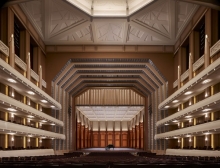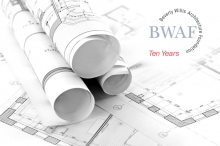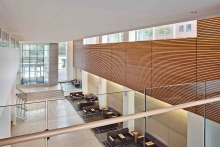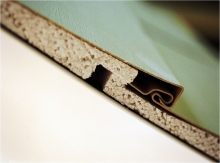- Error
{Re}habitat
Learn how adaptive reuse and upcycling can add hip design to your home, apartment, or yard with the Go Green channel's {Re}habitat series. Follow host Rachael Ranney as she shows you how to repurpose salvaged and found materials, adding fun and function to your space without breaking your budget.

Maintaining your sprinkler system will conserve water and save money. This article will show you how to use an irrigation system to more efficiently water your lawn, garden, or landscaping.
Similar to any other product installed in your home, an automatic sprinkler system needs to be properly maintained. An automatic sprinkler system that is not properly maintained will waste water and be a detriment to the upkeep of your lawn and landscaping. Protecting your investments with regularly scheduled maintenance will ensure that your automatic sprinkler system operates efficiently throughout the year.
DMSAS designs a new performing arts center that will outlast the $20 in your pocket.
Las Vegas is known for its over-the-top re-creations of period architecture and, in some cases, of entire cities. Where else can you view interpretations of Caesarís Palace, an ancient Egyptian pyramid, and modern-day New York City? The newest addition to Vegasís collection of notable architecture is an Art Deco behemoth inspired by the nearby Hoover Dam.
A Conversation with Beverly Willis of the Beverly Willis Architecture Foundation
Written by Kristin Dispenza Thu May 17 2012The Beverly Willis Architecture Foundation has been addressing the needs of women in the AEC industry for the past decade.
The Beverly Willis Architecture Foundation (BWAF), a national research and educational non-profit 501(c) (3) organization, was founded in 2002 by Beverly Willis, after she had been in practice for 50 years. The initial goal of the BWAF was to document the historic work of female architects, and it has expanded to take on the role of educating the public and engaging with the professional community.
Case Study: Clinical and Translational Science Building, Part 2
Written by Lisa Taylor Minor Wed May 16 2012This second article in a three-part series on the University of Rochesterís Clinical and Translational Science Building addresses the strategies Francis Cauffman used to achieve LEED Gold certification.
When designing the Clinical and Translational Science Building (CTSB) in Rochester, NY, Francis Cauffman was challenged with a two-fold mission: achieve high standards of sustainable design while addressing the functional requirements of 11 user groups with distinctly different objectives, day-to-day tasks, and schedules.
The Crystal Cathedral, designed by architects Philip Johnson and John Burgee in 1980 (with adjacent buildings by Richard Neutra and Richard Meier), will continue to serve as a house of worship, having been purchased by the Roman Catholic Diocese of Orange in 2011.
ďOh, Iím mad for religious buildings. The only thing that really gives you a kick in the world is a religious building.Ē The inimitable Philip Johnson was quoted saying these words in the iconic book on the architect by Hilary Lewis and John OíConnor, Philip Johnson: The Architect in His Own Words.
Case Study: Clinical and Translational Science Building, Part 1
Written by Lisa Taylor Minor Mon May 14 2012Francis Cauffman designs a medical facility for the University of Rochester that unites research with practice.
This first article in a three-part series on the University of Rochesterís Clinical and Translational Science Building provides an overview of the workplace strategies Francis Cauffman used to integrate the 11 diverse departments of the Clinical and Translational Science Institute under one roof. Follow Buildipedia throughout the month of May to learn more about the engineering details of the building and how it achieved†LEED Gold certification.
Welcome to the On Site channelís Construction Administration Column. What defines abnormal weather conditions within a contract when the schedule goes over deadline and overages are invoiced?
Columnist David A. Todd, P.E., CPESC, has 37 years of experience in the architecture, engineering, and construction (AEC) industry and has performed much construction administration during that time. He will answer questions from our readers or from his own practice and will provide answers based on his understanding of the construction process.
Installing insulated siding on an older home may be the best way to up its R-value.
My first encounter with insulated siding (or IS as itís known in the trades) came while visiting the Raritan Inn, a bed-and-breakfast in New Jersey that was remodeled by a pioneer in energy-efficient and innovative "green" construction, Bill Asdal. The Raritan Inn serves as a research center and a showpiece of deep-energy remodeling. In 2003, Asdal, in partnership with the Department of Energy (DOE) and the National Association of Homebuilders (NAHB) Research Center, pioneered the first net-zero energy remodeling project in the United States. The structure was clad with insulated siding in an effort to achieve the highest R-values possible within the limits of remodeling an 18th century structure. What I noticed was not the R-value but the aesthetic quality. The siding had a clapboard profile and it lay flat, lacking the usual telling concave cup of most vinyl siding.







